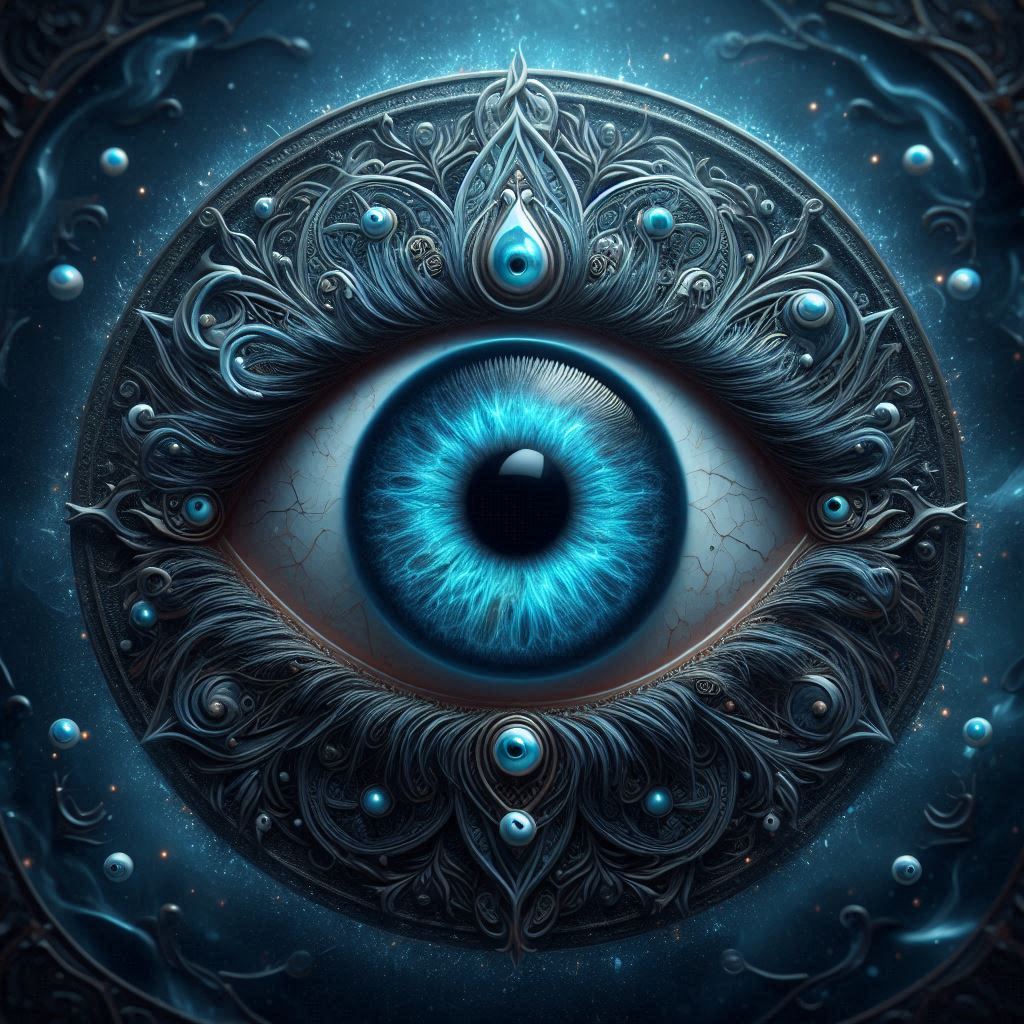The Blue eye , Nazar Boncugu , Evil eye , Nazar eye
The Blue Eye: A Timeless Amulet of Protection
The Blue Eye, often referred to as the Nazar or Evil Eye, is a traditional amulet or talisman renowned for its deep cultural significance and protective properties. Rooted in ancient folklore, this symbol has transcended time and geography, maintaining its relevance in modern society as both a cultural artifact and a popular accessory.
Historical Origins
The concept of the evil eye dates back thousands of years, with its origins found in ancient civilizations such as Mesopotamia, Greece, and Rome. The belief centers around the idea that certain individuals possess the power to inflict harm, misfortune, or bad luck through a malevolent glare. This envious look, often cast unwittingly, is believed to cause illness, misfortune, or injury to the person at whom it is directed. To counteract the effects of the evil eye, various cultures developed protective symbols and rituals. Among these, the Blue Eye emerged as one of the most enduring and widespread amulets. The striking blue color, often considered a symbol of protection, is believed to ward off the negative energy emanating from the evil eye.

Design and Symbolism
The Blue Eye amulet typically features a circular design with concentric layers of blue and white. The outermost ring is dark blue, symbolizing a vigilant gaze, followed by a lighter blue ring representing the eye's iris, and a white or yellow central dot symbolizing the pupil. This design mimics an eye, reinforcing the idea that it "watches" over the wearer, providing protection. Blue, as the dominant color, holds significant symbolism. In many cultures, it is associated with the divine and the protective powers of the heavens. The choice of blue for the Nazar amulet is not arbitrary; it embodies the celestial and the mystical, amplifying its protective qualities.
Cultural Significance
The Blue Eye amulet holds a prominent place in various cultures, particularly in the Mediterranean and Middle Eastern regions. In Turkey, it is known as "Nazar Boncugu" and is a ubiquitous presence in homes, cars, and workplaces. Greeks refer to it as "Mati," while in Arabic cultures, it is simply known as the "Ayin Harsha." The amulet is often given as a gift to newborns, newlyweds, and those embarking on new ventures, symbolizing a wish for protection and good fortune. It is also commonly integrated into jewelry, keychains, and decorative items, allowing individuals to carry its protective powers wherever they go.

Modern-Day Appeal
Despite its ancient origins, the Blue Eye amulet has found a place in contemporary fashion and popular culture. Its visually striking design and the mystique surrounding its protective properties make it a popular accessory. Celebrities and influencers often showcase Blue Eye jewelry, further cementing its status as a trendy yet meaningful adornment. In addition to its aesthetic appeal, the Blue Eye resonates with people seeking a connection to cultural heritage and a sense of security in an uncertain world. Its symbolism transcends religious and cultural boundaries, making it a universally recognized emblem of protection.
Conclusion
The Blue Eye amulet is more than just a decorative item; it is a symbol steeped in history, culture, and belief. From its ancient roots to its modern-day resurgence, the Blue Eye continues to captivate and protect those who wear it. Whether as a cherished heirloom or a fashionable accessory, this timeless talisman endures as a powerful guardian against the malevolent forces of the world.
Recent Posts
-
Order the Best Boss Day Gifts for Male & Female Bosses in the UAE from Craftihouse.com
Every year, Boss’s Day is the perfect opportunity to show appreciation for the people who lead, ment …13th Oct 2025 -
How This Gift Came to Life: The Story Behind Our Palm Leaf Baskets
How This Gift Came to Life: The Story Behind Our Palm Leaf Baskets In a world where everything is be …8th Oct 2025 -
Handmade Leather Key Chains – Timeless Souvenirs & Everyday Companions
Handmade Leather Key Chains – Timeless Souvenirs & Everyday Companions Introduction In a world where …25th Sep 2025




